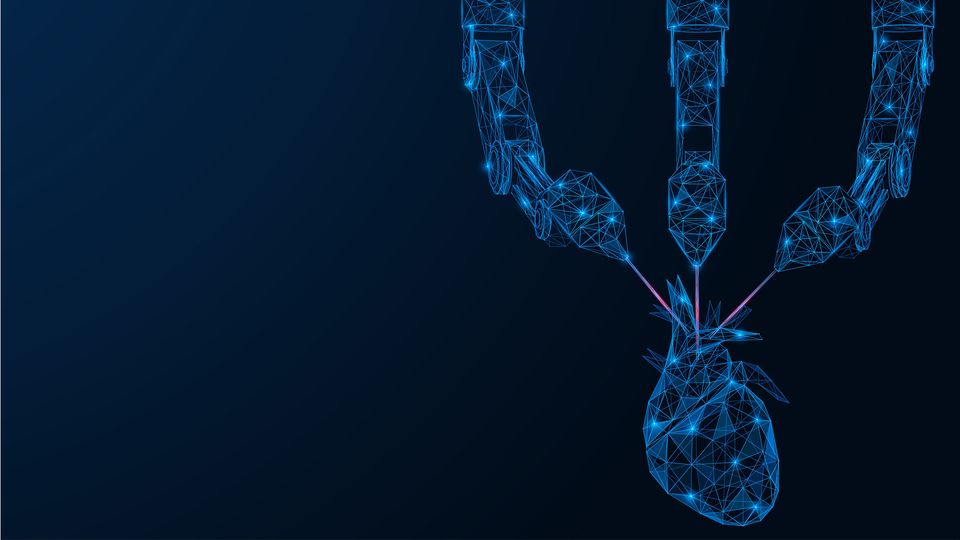Human Tissue-Based Materials for 3D Bioprinting
Currently, the majority of bioinks are animal-based, and do not accurately resemble human tissue.

Complete the form below to unlock access to ALL audio articles.
3D bioprinting aims to create tissue constructs for numerous applications including drug screening and regenerative medicine. One crucial aspect of bioprinting is the use of materials known as bioinks to keep the cells alive during and after the printing process. Currently, the majority of bioinks are animal-based, and do not accurately resemble human tissue.
The human bioinks for 3D printing (HU3DINKS) project aims to overcome the limitations associated with animal-based bioinks via the development of high-performing human tissue-based bioinks.
Technology Networks spoke to Dr. Jasper Van Hoorick, co-founder and CEO of BIO INX, one of the companies involved in the project, to learn more about the future of bioprinting, the benefits of animal-free bioinks and the development of human tissue-based bioinks.
Kate Robinson (KR): What are the current uses and future prospects of 3D bioprinting?
Jasper Van Hoorick (JVH): Currently, 3D bioprinting is mainly still in the research stage. However, the first clinical trials using 3D-bioprinted tissues are starting to emerge, albeit for relatively simple tissues such as non-load bearing cartilage (like the ear). The vision for this technology is that in 10 years, the first 3D-printed tissues will be transplanted to humans using the patient’s own cells. In order to get there, there is still a long way to go. There are many challenges still to be tackled, including some technological challenges, but the main challenge is still the regulatory approval of the technology, especially when printing with living cells.
Fortunately, there are more applications for the technology than regenerative medicine alone, including the 3D printing of mini tissues for drug screening and cosmetics screening. The benefit of this technology is that 3D-printed human tissues can be printed in microfluidic chips as an alternative for animal trials. This can not only significantly contribute to the reduction of animal trials, but can also decrease the cost and lead time for drug development. What’s more, since the printed tissues are already constituted of human cells, there is less risk of inconsistent results thanks to tissues being from a different species. One day, this could even be used in a patient-specific way by printing with cells from a specific patient for which a pharmaceutical treatment needs to be optimized (i.e., chemotherapeutics). For this organ-on-a-chip market, we believe that light-based printing technologies will be key, as they allow for printing at fast speeds with high resolutions down to (sub)cellular dimensions.
However, one thing which is crucial for all these applications is reliable, high-performing bioinks, which enable the printing of the living cells.
KR: What are bioinks and how are they currently produced?
JVH: Bioinks are formulations, mostly polymer based, which allow 3D printing of living cells. These inks should not only enable the printing of the cells, but should also keep the cells alive during and after the printing process and provide a mimic of the natural extracellular matrix. If you compare bioprinting to constructing a house, you can consider the cells as the bricks and the bioink as the mortar which keeps the bricks in position, but also allows the construction of the walls.
As different 3D bioprinting technologies relying on different principles exist, it is important that the bioink is tailored to each technology.
For example, extrusion printing requires a very controlled flow of material, and especially a good shape fixation after printing. For this, the crucial properties for a high performing bioink are related to viscosity and flow of the material. In other words, the rheological properties.
For light-based printing, the photocuring properties are of predominant importance. Here, fast curing reactions are preferred. However, these curing (i.e., photocrosslinking) reactions need to occur in a biocompatible way, not damaging the cells during crosslinking. For 2PP printing, there is a need for very specific two-photon photoinitiating systems, which are very active at the used wavelength (mostly near infrared or 780 nm), which can be very tricky.
For DLP (digital light projection) printing, it is important that the penetration depth of the light within the material is limited to confine the photocuring reaction. Which again requires different photoactive systems than for 2PP printing.
Therefore, a bioink is always a mixture of different materials but usually contains a polymer, a solvent (usually water or buffer) and a photoinitiator. Additionally, there can be other materials in the mix, including additional polymers, growth factors, rheological modifiers, light active components, etc.
In this respect, bioinks for these three technologies can rely on similar polymer materials but can still have completely different compositions to comply with the specific printing tech requirements. What’s more, all bioinks do not only need to comply to these technical requirements, but also need to exhibit biocompatible behavior towards different cell types. This tricky balance makes bioink development very interesting.
KR: How is the human bioinks for 3D printing (HU3DINKS) project aiming to develop human tissue-based bioinks?
JVH: A large part of the currently available bioinks rely on animal-based materials such as gelatin. In the HU3DINKS protocol, we aim to develop bioinks based on human tissue, moreover human placenta tissue. In this respect, the natural extracellular matrix (ECM) of the human placenta is used as the basis for the bioink in a similar manner as gelatin is used as the basis for a lot of bioinks.
However, using human placenta tissue as a starting point has several advantages.
- The bioink is completely animal-free
- The bioink resembles the human ECM better
- Placenta is a very sustainable source of material, as it is mostly considered as waste
- When aiming at animal-free testing as one of the applications, the fact that the bioink is also animal-free is a large added value
Dr. Jasper Van Hoorick was speaking to Kate Robinson, Assistant Editor for Technology Networks.




